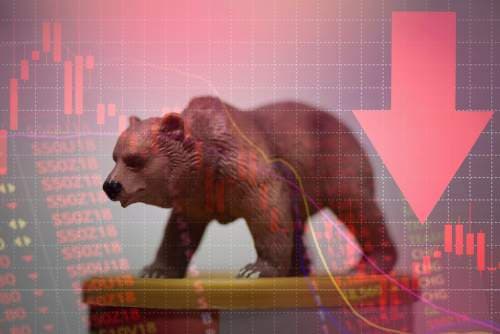
Yesterday was one of those deceptively calm days on Wall Street. The S&P 500 and Nasdaq both notched new record highs, but amid the AI-fueled euphoria, that barely counts as a headline anymore.
It’s almost banal — another high, another day, another trillion dollars in notional capex.
We didn’t follow much of the news. Having spent Tuesday filming in Boynton Beach, Florida, with my friend Ian King, we were more directly focused on the Dollar 2.0 research at hand. (Details on that will come on October 16.)
Then, by sheer coincidence, Ian and I ended up on the same JetBlue flight from Palm Beach to Washington, D.C. — Ian to chase down leads on an upcoming Nvidia conference, me to attend Bari Weiss’ Free Press event featuring Anduril founder Palmer Luckey.
(We’ll have much more to say about Luckey — and what his military-tech empire says about the new American war economy — in this month’s Grey Swan Bulletin.)
Still, even from 30,000 feet, the outlines of a story take shape. And it’s a big one.
 AI Breaks Moore’s Law
AI Breaks Moore’s Law
Here’s the setup, courtesy of Adam Kobeissi. We recast his analysis on X this morning here because it’s one of the clearest explanations I’ve seen of the scale of what’s unfolding.
“AI compute demand,” he writes, “is now growing at over two times the rate of Moore’s Law.”
That means the pace of demand for processing power is doubling faster than the technological capacity to supply it. To keep up, the world will need to invest roughly $500 billion in data centers every year through 2030.
For decades, Moore’s Law — that the number of transistors on a chip doubles every two years — was the quiet metronome of progress. It defined an era. AI just smashed that clock.
Global data center spending will hit $900 billion by 2028, Kobeissi notes. AI servers are growing at a compound rate of +41%, with the overall market expanding +23%.
Just building the facilities, not including chips or servers, now costs $43 billion a year — up 322% in just four years. There are $40 billion worth of U.S. data centers under construction right now, up 400% since 2022.
For the first time in history, the total value of U.S. data centers under construction will soon exceed office buildings.
More than a metaphor, we’re living through a civilizational shift. The upside Grey Swan event, in our opinion, is that the narrative unfolds without any political interruptions or blowouts in the currency and credit markets.
 The New Oil
The New Oil
If the 20th century was powered by oil, the 21st is being powered by computing power – these days, simply called compute.
The infrastructure is struggling to keep up. AI data centers are projected to consume 1,600 terawatt-hours of electricity by 2035 — roughly 4.4% of total global power demand. Power consumption from AI alone will quadruple in a decade.
Where does all that energy come from? Not from wind or solar, which still fluctuate with the weather, but from sources that hum 24/7.
Enter nuclear — quiet, constant, and suddenly fashionable again, with nuclear stocks being one of the market leaders this year – as we identified as part of President Trump’s Great Reset.
Quantum computing, too, is stepping into the conversation. Unlike classical chips, quantum qubits perform calculations exponentially faster, theoretically solving the compute bottleneck — though “theoretically” remains the operative word.
Two questions Kobeissi asks that now define the frontier:
- Where will the money come from?
- Where will the power come from?
No one has convincing answers yet. Which means the story isn’t over.
 The Paradox of Cheap Euphoria
The Paradox of Cheap Euphoria
Here’s the strangest part of all this: valuations are actually getting cheaper as the market goes up. The S&P 500’s forward P/E ratio is roughly half of what it was during the 2000 dot-com peak.
As Kobeissi points out, “Amid daily billion-dollar AI deals, forward P/Es are declining. Many companies are getting cheaper as they go up.”
It’s an inversion of history. Investors are paying less for future earnings because actual earnings — at least for now — are catching up faster than the hype.
That won’t last forever, but it’s part of what distinguishes this AI boom from the vaporware of 2001.
For now, capital is being deployed with manic purpose. Nvidia builds the picks and shovels. OpenAI sells the dreams. Data centers are the new oil fields.
And everyone’s drilling.
 The Age of Intelligence
The Age of Intelligence
We’ve been writing this since Sam Altman posted his Age of Intelligence essay in September of 2024: we’re not just living through another tech cycle. We’re entering the Age of Intelligence — a convergence where AI, quantum computing, robotics, and nuclear energy are all fusing into one global feedback loop of acceleration.
The challenge isn’t necessarily whether these technologies will change everything. As we’re seeing in the stock market alone — they already are. Our concern is whether the real economy, the energy grid, and our feeble 20th-century democratic welfare state can keep pace.
Potential disaster awaits around many a corner. But that’s what an intrepid and resilient investor these days need to be prepared for.
As far as the tech itself goes, we’re still early, as Kobeissi notes. Early, we add, — but not safe.
~Addison
P.S.: Grey Swan Live! returns today at 2 pm Eastern — we’ll dig deeper into Convergence X on the ground level – 8 technological trends all picking up speed with the advance of AI computing power, ushering in the Age of Intelligence. Our intrepid and resilient guide will be George Gilder.
George is going to help us explore where the next trillion-dollar fault line might appear… and whether ordinary investors can find solid ground before the inevitable next shockwave hits.

If you have any questions for us about the market, send them our way now to: Feedback@GreySwanFraternity.



